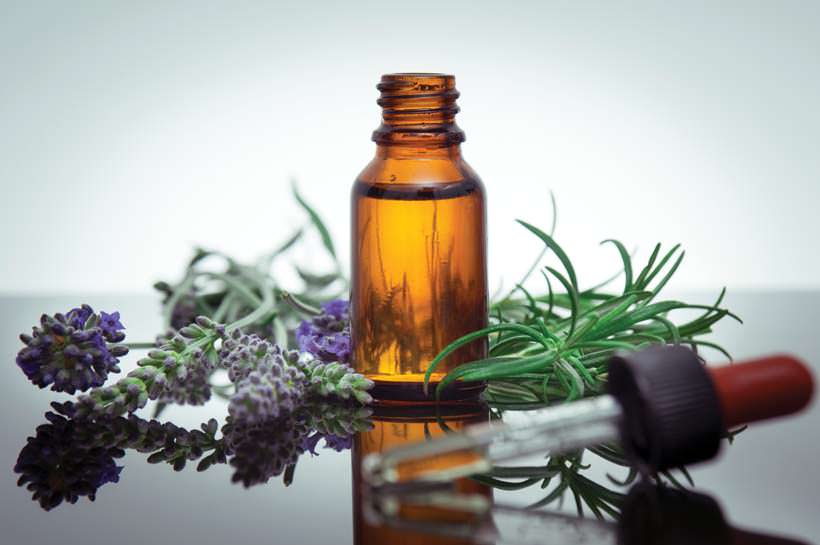
Ayurvedic Abhyanga for Self-Care
When you want a quick and easy way to feel like you’re at a spa every day without leaving your home, schedule an appointment for an Ayurvedic self-massage.
Abhyanga is the Sanskrit term for this ancient Ayurvedic practice that nurtures the body, softens, smoothes and hydrates the skin, stimulates the lymphatic system, lubricates joints, increase circulation, enhances sleep, and calms nerves.
Self-Massage = Love
According to the teachings of Ayurveda, the practice of oiling the body for abhyanga is a powerful act of self-love. In fact, one of translations of the Sanskrit word for oil, sneha, literally means love. When you oil yourself, you love yourself.
Benefits and History
The Charaka Samhita (one of the traditional Ayurvedic textbooks) says,“The body of one who uses oil massage regularly does not become affected much even if subjected to accidental injuries, or strenuous work.
By using oil massage daily, a person is endowed with pleasant touch, trimmed body parts and becomes strong, charming and least affected by old age.” Think about it; massage improves recovery time, increases strength, has anti-aging properties, and can even improve fitness. So if you’re a yogi, you’ll want to include this practice in your daily routine.
Choosing an Oil
According to Ayurveda, different oils have different energetic properties.
- Sesame Oil: Beloved in Ayurvedic tradition, this nourishing oil has powerful effects to hydrate dry skin. It calms the airy vata dosha.
- Coconut Oil: This cooling oil is recommended for people whose skin tends to be sensitive or even acne-prone. It cools the fiery pitta dosha.
- Jojoba Oil: Easily absorbed by the skin, jojoba is naturally anti-inflammatory. It is also recommended to calm the pitta dosha.
- Almond Oil: This light and fragrant oil is useful for people with damp, moist skin or to bring balance to the heavy and wet kapha dosha.
Need help choosing the right oil for your self-massage? Read this.
The Three Doshas
- Vata: Comprised of the elements of air and space, vata is characterized by the qualities of being dry, irregular, rough, and cold.
- Pitta: Comprised of the element of fire (with a little water), pitta is characterized by the qualities of being intense, penetrating, oily, and hot.
- Kapha: Comprised of the elements of elements of water and earth, kapha is characterized by the qualities of being damp, dense, sluggish, and cold.
Steps for Self-Massage
1. Warm the Oil
First warm the oil so it is better absorbed by the skin. Pour the amount of oil you want to use into a glass bottle (about ¼ to ½ cup depending on the dryness of your skin).
Heat a pot of water on the stove and submerge the glass bottle into the water for several minutes. Warm oil and no mess!
2. Develop Technique
When it comes to technique, adjust the the pressure and rhythm for what you need.
- Calm the hyperactive energy of the vata dosha with long, slow, steady strokes, moving to the heart to ease anxiety.
- Reduce the stress and burnout experienced by an excess of fiery pitta with light, soothing strokes to relax the adrenals.
- Stimulate the lymphatic system and reduce the stagnation experienced by the dense and heavy energy of kapha with firm, deep strokes.
3. Massage Abdominals
After oiling up your arms, legs and back, pay particular attention to abdominal area, which houses the organs that are central to your digestion.
According to Ayurveda, healthy digestion is the cornerstone of a healthy life. Massaging the abdominal area helps to enhance digestion.
Use circular motions in a counterclockwise direction; move your hands up the right side of your abdomen, across the top and down on your the left. This follows the direction of muscular movement in the colon, supporting the contractions of peristalsis.
4. Focus on Where You Hold Stress
Pay particular attention to areas where you hold stress. This may include your shoulders, low back, or even the sternum above your physical heart or heart chakra. Combine the massage with attention on your breath to encourage relaxation.
5. Massage Your Scalp
Massage some oil into your scalp (if you didn’t just get a blow-dry!). This soothing practice can relieve tension and even ease headaches. It is said in Ayurveda that scalp massage enhances hair growth.
6. Include your Feet
Reflexology points on the soles of the feet correspond to the rest of the body. The feet also contain a number of important marma points (the Ayurvedic equivalent of acupuncture or acupressure points).
After massaging the oil into your feet, carefully put on a pair of socks to encourage the oil to penetrate the skin (and to keep your feet from sliding on the floor).
7. Don’t Wash Off Oil Immediately
For the full benefit of the practice, keep the oil on your skin for as long as possible.
I usually recommend self-massage before bed both to help you relax and because that way you can fall asleep and allow the oil to soak in. But if that doesn’t sound enjoyable, wait at least 10 minutes before bathing or showering.
8. Add a Steam Room
For the ultimate spa experience, enter a hot steam room or sauna after the massage so you can absorb the oil into your tissues.
9. Enjoy!
Enjoy this sacred time with sneha—oil—to give yourself some sneha—love.
Sahara Rose is an Ayurvedic practitioner, sports nutritionist, holistic health coach, and author of the Idiot’s Guide to Ayurveda, She leads a 12-week program bringing a combination of Eastern and Western health philosophies into busy lives. Sahara offers a free Ayurvedic Mind-Body type quiz at: iamsahararose.com
